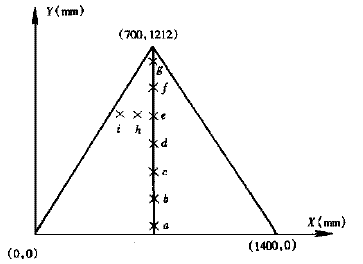1 introduction
Tianjin petrochemical company has 10 PX plant multilayer binding type hydrogen storage tank, this kind of tank Ⅲ class pressure vessel. According to labor department "pressure vessel safety technology and supervision code", this kind of storage tank must be used to test cycle for regular inspection, but due to the structure characteristics of multilayer binding tanks, conventional NDT methods can't carry on the comprehensive inspection, lead to pressure vessel management and safety in production hidden danger exists.
Acoustic emission technique because of its strong practicability, high detection sensitivity, is widely used in many fields. At present, in metal pressure vessel inspection and safety assessment, the acoustic emission is an important nondestructive detection method, especially in single layer metal has been successfully used in pressure vessel inspection, and have the relevant testing standards.
Through the anatomy of a multilayer binding 4 m3 high pressure hydrogen storage tank, the multilayer binding hydrogen storage tank, determination of acoustic emission signal attenuation law of acoustic emission signal propagation speed measurement, material of the acoustic emission characteristics of research, research of acoustic emission signal recognition of summary of sound emission technology to detect the main technical points of the multilayer binding pressure vessels and detection method, and the ten of the multilayer binding 4 m3 high pressure hydrogen storage tanks for acoustic emission detection. Results show that the acoustic emission technique is detection and safety evaluation of multilayer binding pressure vessels of a better method, for the enterprise to solve the technical problems in the pressure vessel inspection.
2 layers of bandage 4 m3 overview of high pressure gas storage tank and test conditions
2, 1 parameter
Design pressure: 14, 7 mpa
Job stress: 12 mpa
Design temperature: room temperature
Working temperature: room temperature
Material: 16 MNR
Medium: hydrogen
Diameter: 800 mm Φ
36 mm wall thickness: head, cylinder thickness: 19 + 6 * 3 = 37 mm
2 · 2 structure characteristics
Multilayer binding 4 m3 high pressure hydrogen storage tanks for 4 layers of concentric cylinder type pressure vessel, from a concentric cylinder type cylinder and two spherical head welded together. Cylinder section by section 5 1600 mm long tube butt welding and become, each tube section are compared.in for 19 mm thick, outside bandaged 3 layer thickness is 6 mm plate, spherical head size for Φ 800 x 36 mm. The whole tank only three hole, one end head open Φ inspection hole of 150 mm, the other end of the head has a Φ 35 mm vent, cylinder on another Φ drainage hole of 35 mm. The tank is not internal inspection, and the conventional NDT methods check inner barrel longitudinal weld, and first and second layers of plate for girth weld can only check transverse defects by ultrasonic flaw detection.
2, 3 test conditions
Test instrument: SPARTAN - AT32
Detection software: SA - LOC
Motivate probe: PULSER
Preamplifier: 1220 a
Receiving probe: R15
Andadministrative gain: 40 db
Material testing machine: MTS810
3 acoustic emission signal propagation in the multilayer binding tank ontology of attenuation law
Attenuation law of ae signal to determine the arrangement of the distance between probe has very practical significance. For multilayer binding tank, filled with water in the tank first, step up to the work pressure and keep pressure constant. And then in turn in the same part of the cylinder, 1 bandage layer, binding layer 2, 3 bandage on rotating excitation probe, in binding layer (the outermost) 3 different distance place receiving probe, incentives and collected acoustic emission signals in turn. Trials were collected from different parts of the three excitation signal attenuation, excitation source excitation signals similar to crack and crack signal. The location of the excitation source is shown in figure 1.






